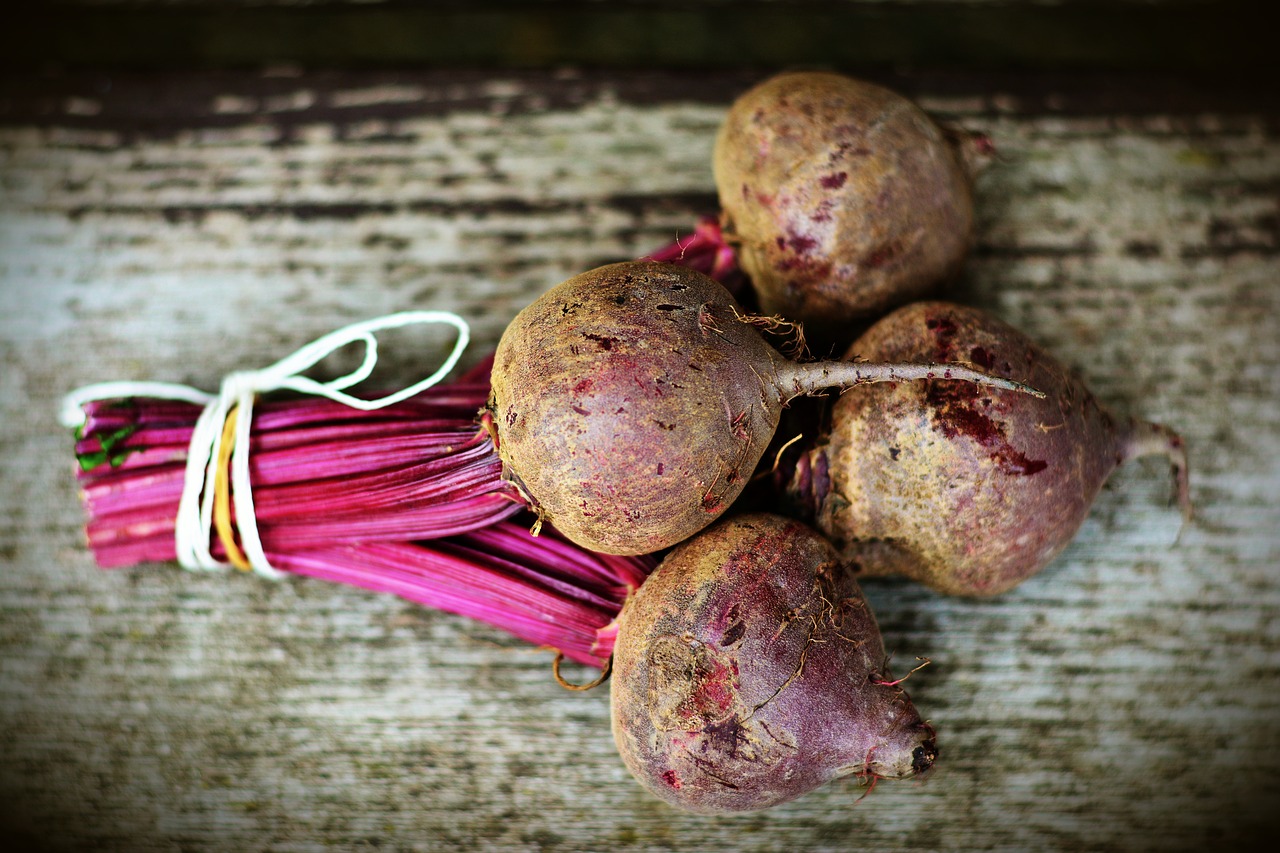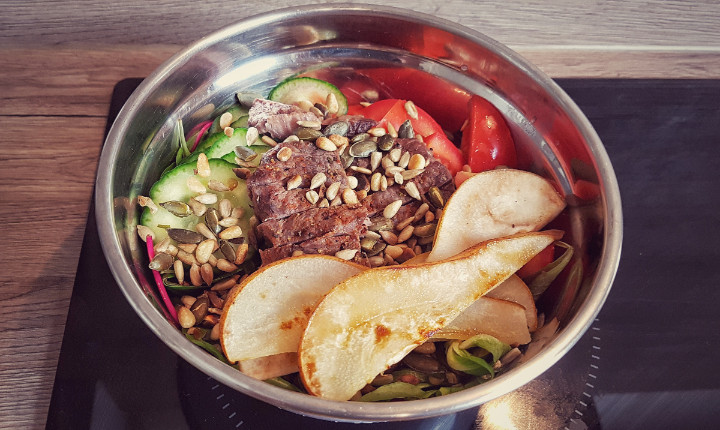

Andreas LPM
- November 5, 2019
- No Comments
How to make the greatest salad ever?
Introduction
Salads are boring! Watery green leafs that don’t taste like much, have almost no calories and have to be drowned in a sugary-fatty-solution aka “dressing” aka the stuff we want to avoid to be palatable!
Table of Contents
The Science Of Taste
The Humane Taste
- bitter
- sweet
- salty
- sour
- umami
- crunchy
- smooth
- contrasting
- juicy
- mouth-coating (think oil and fat that covers the inside walls of your mouth)
- nutty
- fruity
- exotic
- sea food
- meaty
- cheesy
- fresh
How To Make Everything Taste Awesome

TIP 2: Mouth-feel. The crunch of lettuce is very different to the crunch of nuts and croutons. Avocado is creamy and berries are literately small fresh and fruity explosions when popped. Have those different sensations in your salad.
TIP 3: For contrast and variation put all those different components into your salad. Fruits for freshness and sourness, countered with a crunchy, lightly salted nut.
The Nutritionally Rich Salad

Protein
- Chicken breast stripes
- Beef
- Pork
- Bacon
- Fish
- Shrimps
- Mozzarella
- Feta
- Eggs
Related: Roadmap to your custom diet
Fat
- Olive oil, hemp oil, sesame, walnut, peanut, …
- Nuts/ seeds (walnut, pecan, sunflower, macadamia, …)
- Avocado
- Coconut oil
- Bread (as a side to take bites from. Sorry, croutons can be a bit too fatty)
- Beans
- Peas
- Couscous
- Pasta
Greens and vegetables
- Spinach, iceberg, lettuce, kale,
- Arugula
- Peppers (all colors)
- Carrots
- Beets
- Chard
- Broccoli
- Rhubarb
- Onion/ spring onion
- Cucumber
- The classics: apple, pear, orange
- Pineapple
- Mango
- Strawberry
- Grapes
- Melons
- Banana
- Lychee
- Pomegranate seeds
- Peppermint
- Basil
- Dill
- Ginger
- Celery
- Caraway seeds
- Herbs of Provence
- Vinegar (from grapes and other fruits/ berries)
- Vinegar creme
- Tabasco/ chili sauces
- Honey
- Mustard
- Soy sauce
- Fruit juices (orange, lime, lemon, cherry, apple, ..
- Kimchi
- Sauerkraut
- Eggs
- Berries

FREE NO-MATH CHEAT SHEET
Download my cheat sheet to set the right food amounts to jump-start your diet. no math. Just pick and choose.
Preparation And Storage

Related: How to choose the perfect diet?
The nutritional-qualities wont be effected, but who likes to eat a watery, mushy paste of anything? Well, I certainly don’t! So, what can we do about it?
Tips for dressings:
- The dressing should be kept separate. Add it to your salad right before eating.
- A great base for any dressing is a high quality oil and vinegar. Add some honey and mustard, some salt, shake and enjoy!
- You can also put some seeds like sunflower seeds into the dressing. The seeds help mixing oil and vinegar.
- Make the dressing a little bit too salty. This brings enough taste as it’s spread out on the whole salad.
Anatomy Of A Great Salad

- Begin to fill your bowl with 2-3 different non-leafy, harder vegetables (peppers, broccoli, cucumber,carrots, tomato, …).A hand-full is usually enough, remember: variety in taste keeps the salad exciting.Don’t mix! This way you can pick different combinations with each bite and that brings even more variety.
- Add a super-food like Kimchi or sauerkraut to your base.If you picked eggs or berries, they go on top the layer of leafy-greens (s. Step 4).
- Try fruit in your salad or a fruity tasting vegetable like beets.A small hand-full will go a long way, that could be a quarter of an apple for example, but feel free to add some more. Be careful with fruits that loose a lot of juice when cut! Orange slices should stay intact.Diced ginger would also work in this area.
- Now add a layer of mixed green-leafy salad like iceberg, spinach, arugula, …
- Next up is your protein.Sit fried chicken breast, fish, mozzarella, eggs or what have you on top of the greens.
- To make any topping stick, pour the dressing slowly over the salad. Make sure to cover as much as possible.
- Sprinkle slightly roasted seeds and chopped nuts on top.
- Finally add freshly cut herbs like basil and peppermint.
Salads You Should Try

Here I got you 5 salads that are based on the ideas from this article. You can scale the quantities up and down depending on your individual needs. Beware, though, these are intended as complete meals. Don’t add any of these salads to a main dish, unless you want to pack on calories. Give them a try, feel free to add some variation and let me know in the comments how you liked them. Enjoy!
#1 Andreas Classic “Buddha” Bowl
Layer1: Tomato, peppers ( red and yellow), root beets and cucumber
Layer2: Mozzarella and feta cheese
Layer3: lightly roasted sunflower and caraway seed, cashews
Dressing: Olive oil, sweet mustard, honey, salt and pepper
Chopped basil
#2 Couscous Salad
This salad is not layered. Mix everything together. So, grab a big bowl, throw in the couscous, add all other ingredients, mix gently.
- Couscous, add to boiling water, turn off stove, cover with lid, let sit until other ingredients are ready/ cut
- Chick peas, either boil the dry peas or rinse pre cooked from a can
- dried tomatoes, cut into little stripes/ pieces
- spring onion, cut into little rings
- green pepper, diced
- black olive (halves)
- caraway seeds
- fresh peppermint, chopped
- olive oil
- chili flakes
- lemon/ lime juice
- mix everything in a big bowl
- add salt and pepper while mixing
#3 Greek/ Italian Farmers Salad
Layer1: Sliced tomato and cucumber
Layer2: Red onion rings and green pepper stripes
Layer3: Olives (whole, green and black)
Layer4: Feta/ sheep cheese in big chunks
Plenty of high quality olive oil!
Salt and Pepper
#4 Pasta Salad
Leftover pasta (is that even possible?)
Baby spinach
Green pesto
Mix
Tastes great with chicken stripes or mozzarella
No need for salt and pepper, the pesto should have enough.
#5 Beef/ Salmon Salad
Layer1: Peppers (yellow, green), tomato
Layer2: Kidney beans and grated carrots
Layer3: Arugula
Layer4: Beef or salmon (or both), fried
Dressing: Olive oil, lime juice or vinegar, finely diced ginger, salt and pepper
Conclusion
- Use ingredients that are fresh and of high quality
- Cover basic taste (sweet, sour, salty and bitter)
- Combine different flavors, but keep the ingredients separate in the arrangement
- Feel of mouth: Contrasting, crunchy, creamy all add variety that keep you excited
- Pick ingredients to meet your caloric and nutritional needs/ allotment if the salad is a meal not just a side
- Add super foods
- Think layers to counter watering
- Bottom: harder veggies like peppers and broccoli
- Fruit work great on salads and add a sour/ exotic component
- Center: leafy greens
- Protein source
- Top: Nuts, seeds, dressing, herbs and spices

FREE NO-MATH CHEAT SHEET
Download my cheat sheet to set the right food amounts to jump-start your diet. no math. Just pick and choose.
